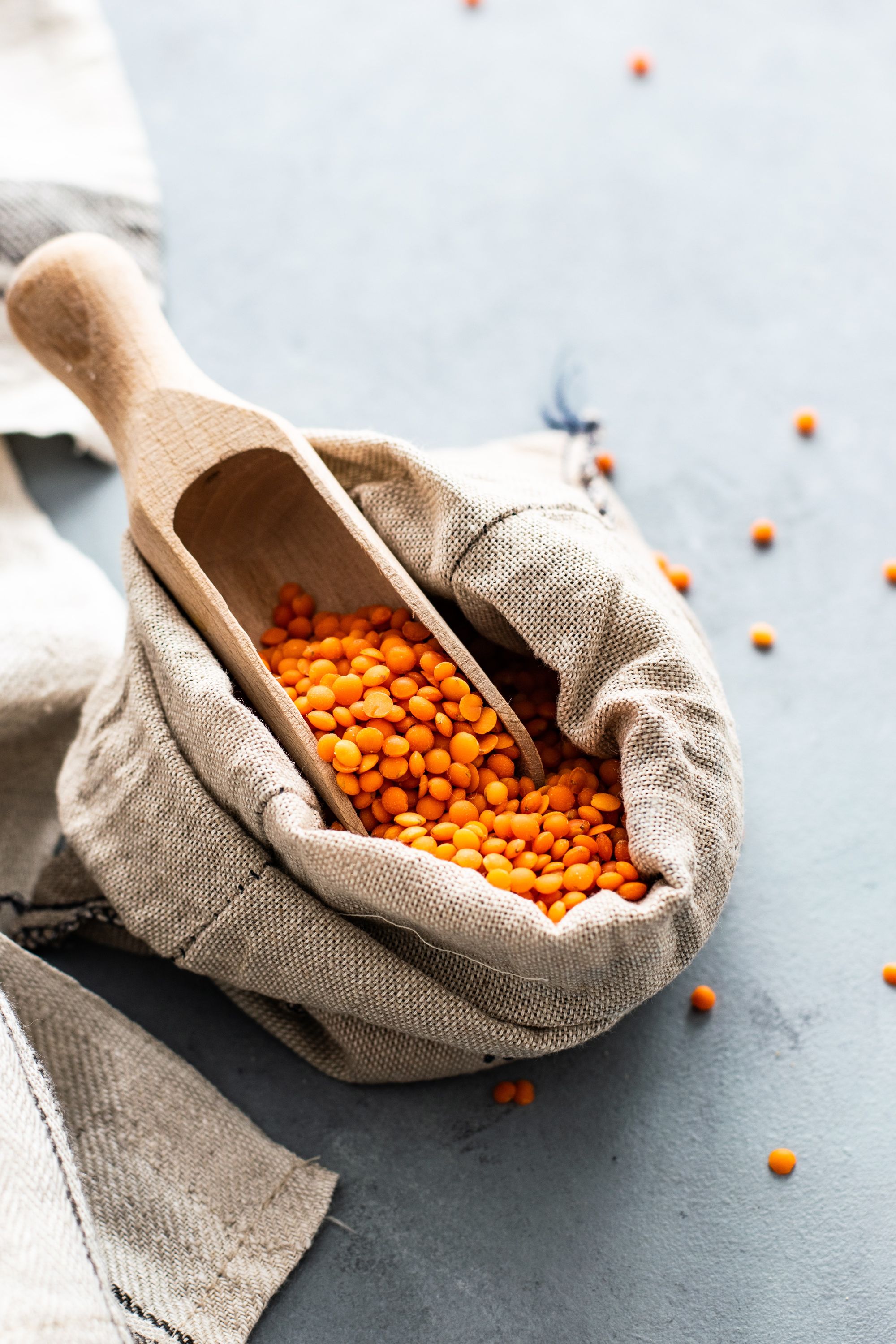Lentils 101

Lentils are very small oval shaped seeds; they are not a bean. They grow in pods of plants called the legume plant and are dried. They are also known as pulses. There are many varieties and they come in different colors from brown to yellow to orange to black and green. You can purchase them at the grocery store in the bean aisle or in bulk bins at health food stores. Some varieties are harder to find like French Puy lentils, so they are most likely found online. To buy in bulk and for a lower cost, it may be worth it to visit an Indian grocery store or Middle Eastern market which sell them in abundance. Because they are so inexpensive and easy to store with a long shelf life, they are considered a staple globally. They are very popular in the Middle East and Asia as a protein source. Interestingly, Canada is the largest producer of lentils, followed by India, and most of them are imported to South Asia.
Lentils are considered a very nutritious as they are very high in protein, fiber, and iron especially. One cup of lentils contains 16g of fiber, 18g of protein, and meet 36% of the DV (Daily Value) or daily needs for iron.
Lentils should be stored in an airtight container away from light, heat, and moisture which helps to keep insects out. They last indefinitely. Cooked lentils last long in the fridge and can be frozen to last even longer, which make them ideal for meal prep. Not only are they accessible and affordable and easy to store, but they are also delicious. They have an earthy taste and depending on the variety taste differently. For examlpe, reddish-orange lentils vs. the green lentils that have a more peppery taste. Because they taste mild, they are a great base for many ingredients and spices, which impart more flavor.
Here’s a quick overview of the varieties of lentils available.
- Brown lentils. They get very soft very quickly.
- Green lentils are larger and retain their shape and firmness well while cooking. So, they are easier to stir into various dishes like a pilaf or salad.
- French puy lentils are harder to find in grocery stores, so they are typically purchased online. They are grown in central France, smaller, a darker green shade, and take the longest to cook, about 40 minutes. They retain their shape well and stay firm while cooking.
- Yellow lentils are sweet and nutty and have a reddish interior. These lentils break down easily while cooking so they work well in dips, purees such as Indian dal. They are also known as Toor dal.
- Red lentils are yellow lentils that have been hulled and split. They are a light red to orange color and very small. Because they have been hulled and split, red lentils cook the quickest. They are also known as Masoor dal.
- Black/beluga lentils are small and round. They are called beluga lentils because they resemble beluga caviar when cooked. Although the hull is dark black in color, the flesh is light and creamy. They are the highest in protein and fiber of all the varieties.
Author: Prathima Kannan, MPH, RD
